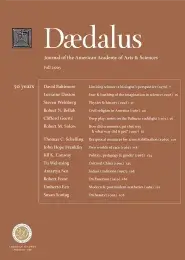Deep play: notes on the Balinese cockfight (1972)
Early in April of 1958, my wife and I arrived, malarial and diffident, in a Balinese village we intended, as anthropologists, to study. A small place, about five hundred people, and relatively remote, it was its own world. We were intruders, professional ones, and the villagers dealt with us as Balinese seem always to deal with people not part of their life who yet press themselves upon them: as though we were not there. For them, and to a degree for ourselves, we were nonpersons, specters, invisible men.
We moved into an extended family compound (that had been arranged before through the provincial government) belonging to one of the four major factions in village life. But except for our landlord and the village chief, whose cousin and brother-in-law he was, everyone ignored us in a way only a Balinese can do. As we wandered around, uncertain, wistful, eager to please, people seemed to look right through us with a gaze focused several yards behind us on some more actual stone or tree. Almost nobody greeted us; but nobody scowled or said anything unpleasant to us either, which would have been almost as satisfactory. If we ventured to approach someone (something one is powerfully inhibited from doing in such an atmosphere), he moved, negligently but definitively, away. If, seated or leaning against a wall, we had him trapped, he said nothing at all, or mumbled what for the Balinese is the ultimate nonword– “yes.” The indifference, of course, was studied; the villagers were watching every move we made and they had an enormous amount of quite accurate information about who we were and what we were going to be doing. But they acted as if we simply did not exist, which, in fact, as this behavior was designed to inform us, we did not, or anyway not yet.
This is, as I say, general in Bali. Everywhere else I have been in Indonesia, and more latterly in Morocco, when I have gone into a new village people have poured out from all sides to take a very close look at me, and, often, an all-too-probing feel as well. In Balinese villages, at least those away from the tourist circuit, nothing happens at all. People go on pounding, chatting, making offerings, staring into space, carrying baskets about while one drifts around feeling vaguely disembodied. And the same thing is true on the individual level. When you first meet a Balinese, he seems virtually not to relate to you at all: he is, in the term Gregory Bateson and Margaret Mead made famous, “away.”1 Then–in a day, a week, a month (with some people the magic moment never comes)–he decides, for reasons I have never been quite able to fathom, that you are real, and then he becomes a warm, gay, sensitive, sympathetic, though, being Balinese, always precisely controlled person. You have crossed, somehow, some moral or metaphysical shadow line. Though you are not exactly taken as a Balinese (one has to be born to that), you are at least regarded as a human being rather than a cloud or a gust of wind. The whole complexion of your relationship dramatically changes to, in the majority of cases, a gentle, almost affectionate one–a low-keyed, rather playful, rather mannered, rather bemused geniality.
. . .
